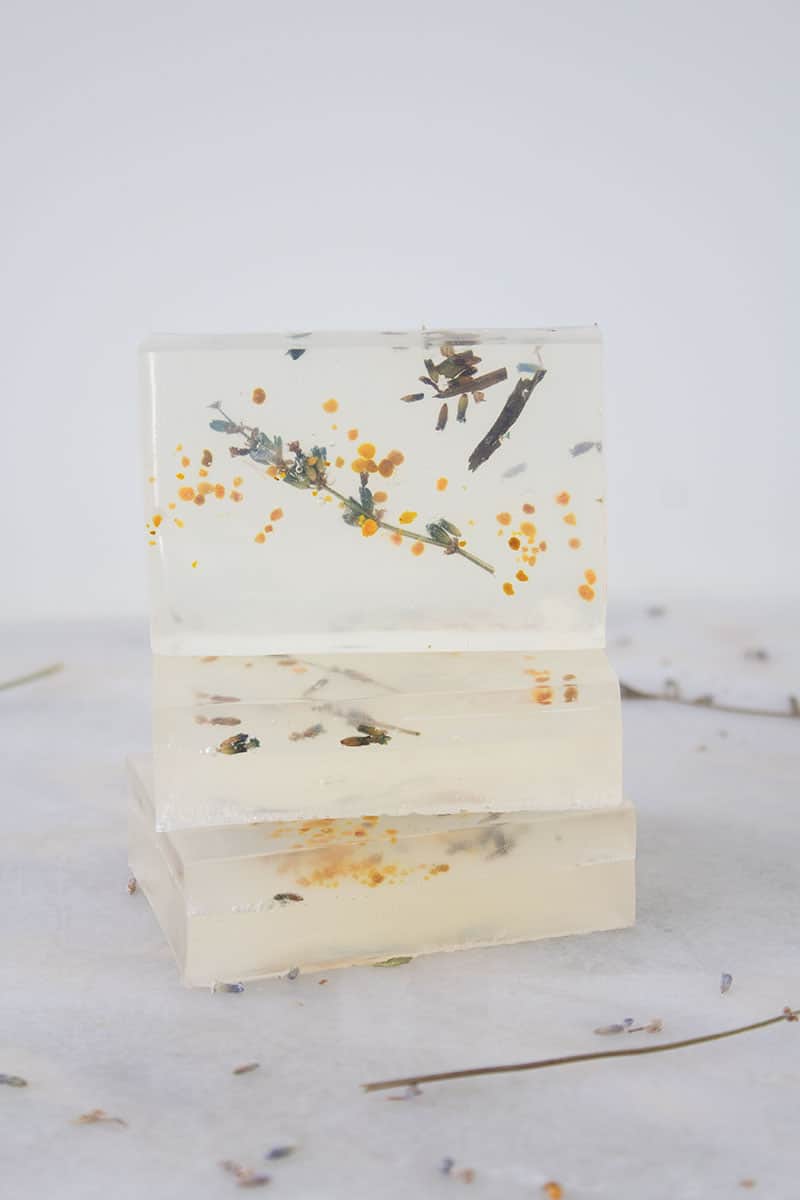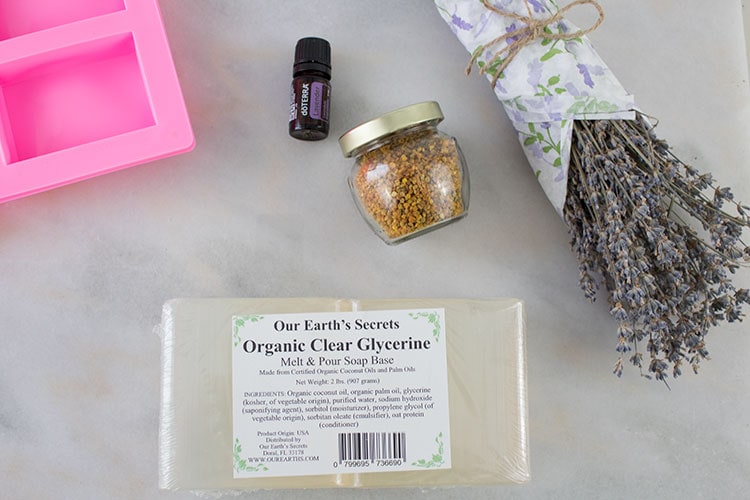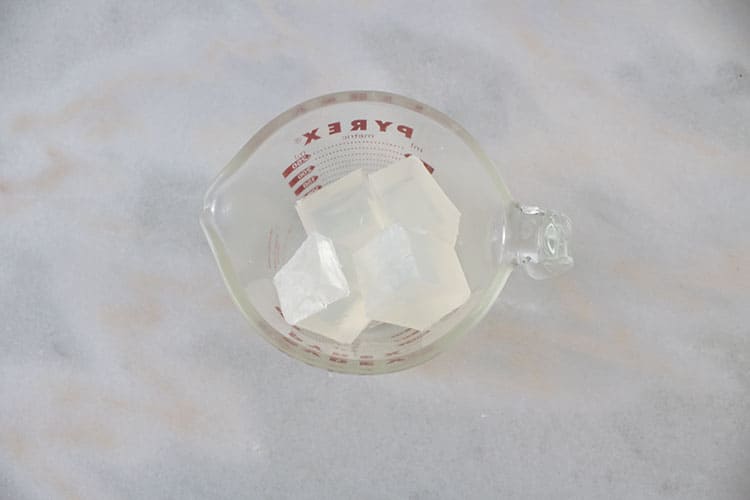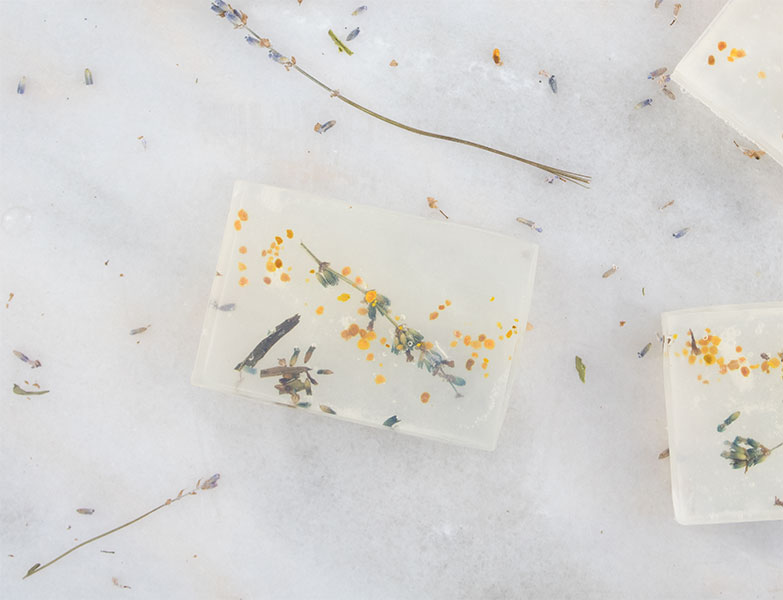How To Make Soap – Lavender and Bee Pollen

I have wanted to learn how to make soap for months. One reason for that is my husband has very sensitive skin so we are always on the hunt for all-natural soaps for him. Vendors at flea markets often have a good selection, but we only have flea markets here in NJ during the warmer months. So I took matters into my own hands.
This is my first attempt at soap making, so I chose to use a melt and pour base. The other option involves using lye and is a much more involved process. Eventually I’ll try using lye, but for now, I wanted to keep it simple. After shopping around, I was able to find an organic melt and pour base.
WHAT YOU WILL NEED*:

Organic Melt & Pour Soap Base, Clear
I bought the bee pollen at a local honey farm. The health benefits of consuming bee pollen are tremendous. It’s one of nature’s most completely nourishing foods, containing nearly all the nutrients humans need. Isn’t that crazy? It also contains amino acids and vitamins which help protect the skin and treat inflammation.
I purchased the dried lavender at a local lavender farm (we have great shopping around here!) that I wanted to add to the soap. Because the dried lavender doesn’t have much scent left to it, I also used lavender essential oil.
I’ve recently started using essential oils more around my home. I’ve found a brand called doTerra through a friend who is big into health and nutrition. This brand is safe for consumption, which most other essential oils brands are not. doTerra uses a method of carefully distilling the oil from plants at just the right time. They also meet CPTG Certified Pure Therapeutic Grade® quality protocol. I’m just throwing this out there because I didn’t know that all essential oils were not created equal, so it pays to do your homework.
Above I linked to the lavender essential oil that I used for this recipe. However, you actually get more for your money if you buy the whole starter kit, which is what I did.
HOW TO MAKE SOAP:
Begin by cutting up your soap base into 1-inch cubes. These are easy to cut through with a simple steak knife. Add them to a glass measuring cup or microwave-safe bowl and microwave at 15-second intervals until melted. And if your microwave happens to be on the fritz like mine was this day, you can also simply melt this on the stove.

Pour the melted base into your molds filling only halfway up. Next, add your dried lavender, bee pollen and 2-3 drops of essential oil per bar. Let that harden for about 15 or 20 minutes and then melt more of your base and fill to the top. You can use a toothpick to move your dried flowers around and also to pop any soap bubbles before the base sets.

Let the soap become completely solid before removing from the molds. I waited for about 2 hours, which was more than enough.

Another thing to note is, you can fill your molds up completely with melted base, and then add your ingredients. I wasn’t sure if everything was going to float to the top or not so I tried it both ways. As it turns out, the dried lavender did float to the top but the bee pollen did not. There is no right or wrong way, it depends on what you want the final bar to look like.
When you fill it halfway, you will see a faint line around the sides of the soap where the halves meet. That is something else you might want to keep in mind depending on what you plan to do with your soap.

This made 8 bars of soap. And not only do I have all this organic soap now, but my entire house also smells amazing from the Lavender oil.
There are so many different essential oils that are good for so many different health and beauty concerns that it can be hard to keep track! To make it easy, I put together a quick reference guide on essential oils to help you see at a glance the benefits of each!
*This post may contain affiliate links, you can read my full disclosure here.


Beautifully done!
Thank you!